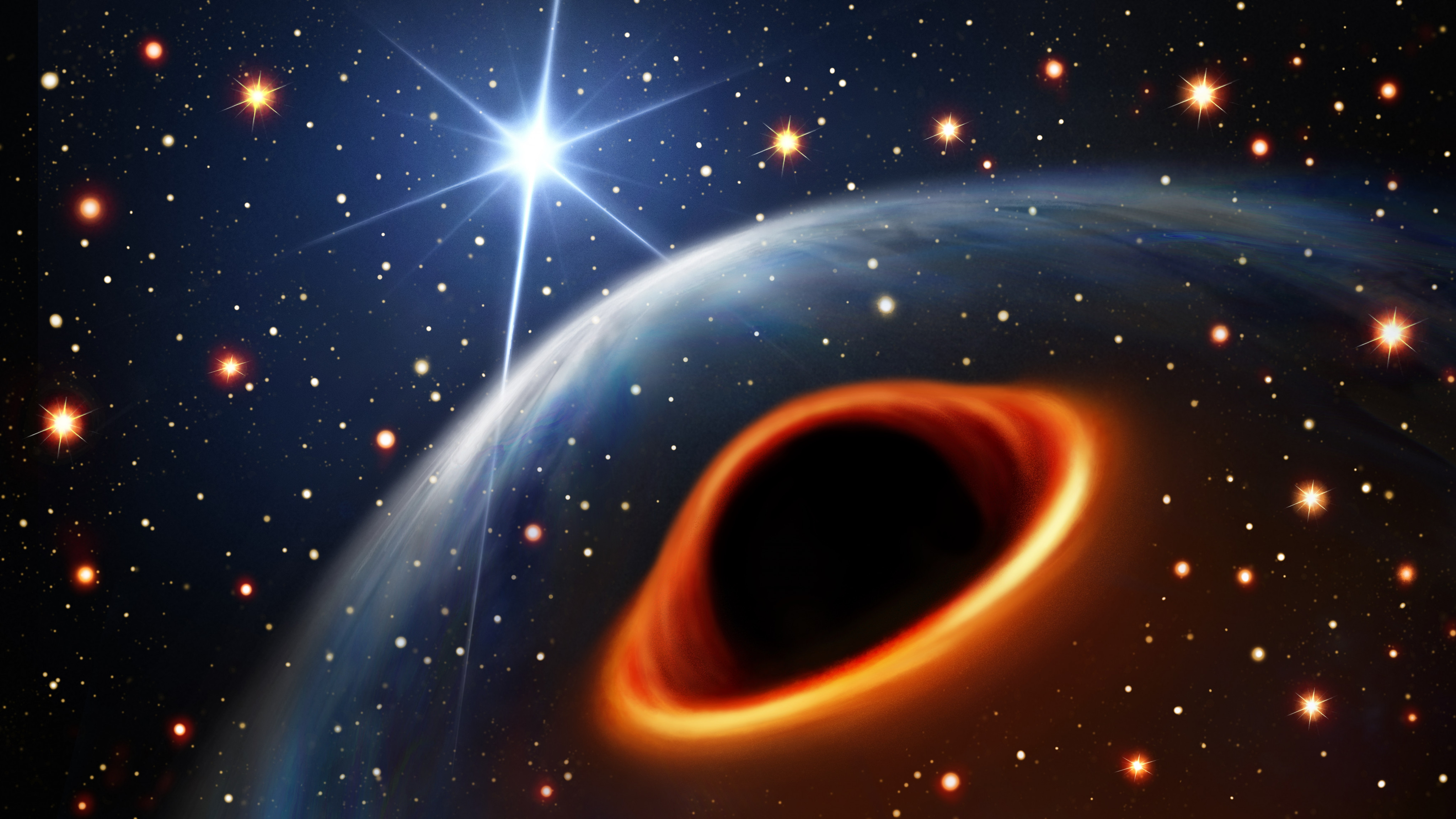Mysterious deep-space object could be the smallest black hole ever discovered — or the heaviest neutron star
A newly discovered mystery object could be the heaviest neutron star ever seen, the smallest black hole, or something completely new to science.

Astronomers have spotted a mysterious cosmic object that could be the lightest black hole or the heaviest neutron star ever discovered — or something completely new to science.
The unknown object, discovered 40,000 light-years away inside a dense globule of stars named NGC 1851, was detected through the rapid flashes of its orbiting companion — a rotating neutron star known as a pulsar that sweeps out a beam of light once every 6 milliseconds.
According to the researchers, the new entity falls within the historical "mass gap" between black holes and neutron stars, meaning it could be either one. The researchers published their findings Jan. 18 in the journal Science.
"Either possibility for the nature of the companion is exciting," lead author Ben Stappers, a professor of astrophysics at The University of Manchester in the U.K., said in a statement. "A pulsar-black hole system will be an important target for testing theories of gravity and a heavy neutron star will provide new insights in nuclear physics at very high densities."
Related: James Webb telescope discovers the oldest, most distant black hole in the universe
Both black holes and neutron stars are stellar corpses, left behind after massive stars end their lives in violent explosions called supernovas. Despite being born the same way, however, the two types of objects can have vastly different masses: Supermassive black holes can weigh as much as billions of suns, while neutron stars rarely get heavier than about three solar masses. But the lightest black holes and the heaviest neutron stars can look very similar from far away.
For most of astronomy's history, scientists could only spot neutron stars as heavy as twice the mass of the sun and black holes as light as five solar masses, leaving everything in between a mystery. The gap between the two, known as the mass gap, was finally crossed in 2019, when the Laser Interferometer Gravitational-Wave Observatory (LIGO) detected space-time ripples indicative of a light black hole or heavy neutron star falling somewhere between the two. Nonetheless, detections of mass-gap-filling objects through conventional light-based telescopes have remained elusive.
To spot the new object, astronomers used the MeerKAT radio telescope in South Africa to scan the NGC 1851 globular cluster — a crowded blob of stars so tightly packed that the cosmic furnaces may sometimes knock one another from their orbits and even collide.
Sign up for the Live Science daily newsletter now
Get the world’s most fascinating discoveries delivered straight to your inbox.
Faint radio pulses repeating 170 times a second drew the astronomers' attention to a pulsar, and by observing the subtle changes to its highly regular "ticks," the scientists mapped out its orbital motion. This revealed that the pulsar was in a binary system, orbiting an object of roughly 3.9 solar masses — bang in the middle of the mass gap.
What the object could be — the most massive neutron star known, the lightest black hole, or some yet-to-be-characterized exotic star husk — is unclear. But the researchers said that probing it more deeply could help them test our existing theories of matter.
"We're not done with this system yet," co-author Arunima Dutta, a doctoral student at the Max Planck Institute for Radio Astronomy in Bonn, Germany, said in the statement. "Uncovering the true nature of the companion will be a turning point in our understanding of neutron stars, black holes, and whatever else might be lurking in the black hole mass gap."

Ben Turner is a U.K. based staff writer at Live Science. He covers physics and astronomy, among other topics like tech and climate change. He graduated from University College London with a degree in particle physics before training as a journalist. When he's not writing, Ben enjoys reading literature, playing the guitar and embarrassing himself with chess.









